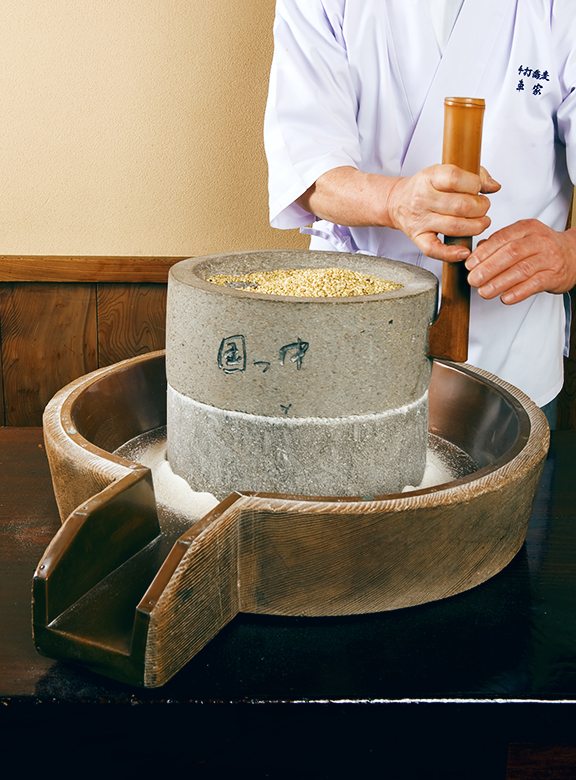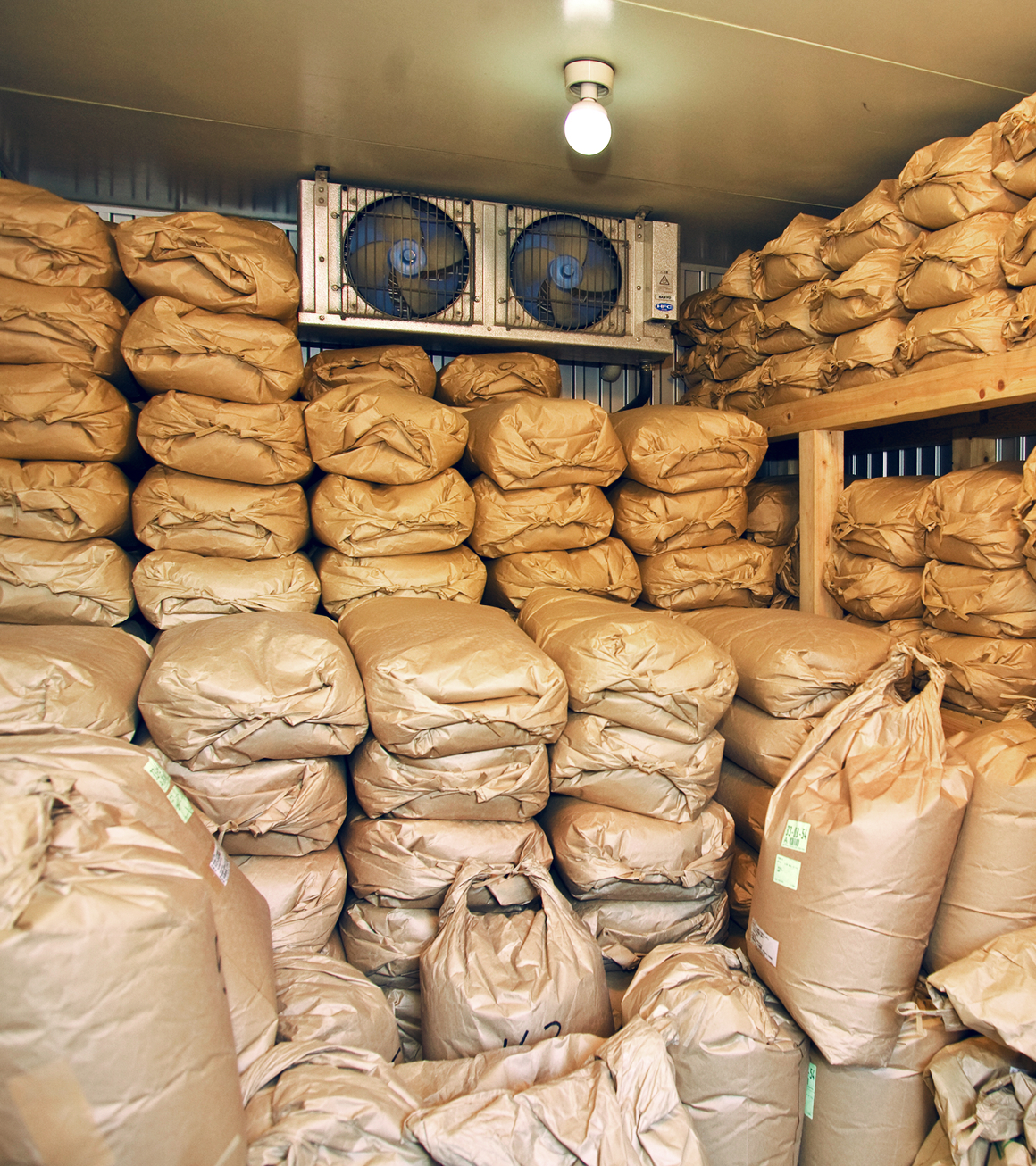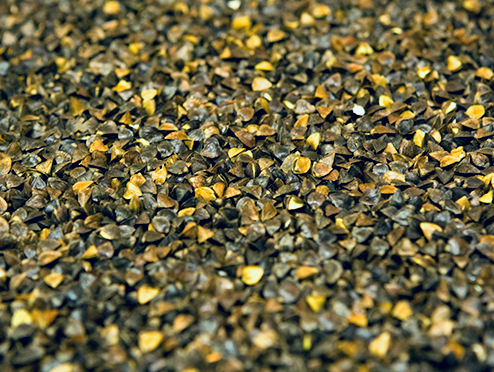
Commitment to Ingredients
Cooking is about searching
All of Kuruma's ingredients are carefully selected by region.
For example, the seasonings are three-year aged soy sauce made by Marunaka Soy Sauce, a company that has believed in the same production methods, safe ingredients, and no additives since the Edo period.
We also select the best bonito flakes, kelp, mirin (sweet sake), sugar, and other ingredients. We also use pure water that has been further filtered from well water.

konbu / Place of Origin: Luoyu
It is a mineral-rich mortar natural product from the clean rivers of the Shiretoko Peninsula, a World Heritage Site. It is dried by hand by three generations of fishermen, father and son.

edible wild plants / Provenance: Yamagata, Niigata
In spring, wild vegetables arrive from Niigata and Yamagata. Butterbur sprouts, cod sprouts, mountain dokkatsu, kogomi, and koshiora are served as tempura, boiled, or dressed.

mushroom / Provenance: Niigata, Yamagata
We source natural buckwheat flour from Niigata and Yamagata prefectures, the hometowns of buckwheat flour, from all over Japan.

close / Provenance: Niigata, Ibaraki
We offer freshly grown buckwheat noodles from homemade brown buckwheat (with hulls) by contract farmers in Niigata and Ibaraki.

sakura shrimp (Sergia lucens) / Place of Origin: Shizuoka
Shizuoka Ginga Bay raw food is used.

adzuki beans / Place of Origin: Kyoto
A large, luxurious, hand-selected Dainagon azuki from Tanba.

dried shrimp / Place of origin: Ehime

small pieces of sliced dried bonito / Place of Origin: Makurazaki
We do not have cultured, natural honkare flakes.
Carefully Selected Ingredients
-
duck
These are domestic ducks that have been raised for a full period of time.
-
type of mirin containing alcohol
A traditional, time-consuming brew from glutinous rice.
-
seasoning
Organic soy wheat, natural sun-dried sea salt, and 3-year old maruchu soy sauce are used.
-
sugar
Zarame, Hateruma brown sugar (Okinawa), Kamishirokasugar, Wasanbon.
-
vegetable
These are safe, tasty, and strong vegetables from Suzuki Farm, a local Hachioji farm that continues to grow vegetables using reduced pesticides and organics.
-
water (esp. cool, fresh water, e.g. drinking water)
Reverse osmosis membrane system developed by NASA. Minerals, O157, etc. can be removed and the water becomes sterile. Although it is a water purifier, it can produce pure water better than mineral water.
-
pretext
We slowly make soup stock with bonito shavings and Rausu kelp that we shave in our own store every day.
-
bamboo shoot
我が家の竹林があり、釜に火を着けてから掘りに行きます。そして自慢のカツオだしで炊いています。
-
wheat flour
埼玉県・小久保さんの有機栽培小麦です。
Home Flour Milling
It is ground that day and eaten that day. The buckwheat has the germ in the center.
So it is completely powdered, and if it were rice, it would be like eating brown rice, rich in minerals and essential amino acids.
It also has a very good nutritional balance. Brown buckwheat is preserved so that it will germinate vigorously no matter when it is sown in the field.
We consider carbohydrates the same as protein. Fresh fish can be eaten as sashimi. If it gets old, it can be boiled, tempura, or fried.
The calories are the same, but what about the effect on the body?
We put a lot of time and effort into our soba noodles, just as a mother chooses the ingredients for her baby's meal, so we want our customers to enjoy soba noodles like sashimi.

Stone Mortar Features
Food must first of all be good for the body before it can taste good. We value our customers and build a comprehensive dining space,
Enjoy a rich time through the provision of safe and secure handmade soba noodles.
We would like to be of service to the world by receiving your support.




Flow of homemade flour milling
Contract-grown brown buckwheat noodles from selected regions are kept warm and refrigerated (in a state of hibernation)
Quality Control. Our brown soba noodles are currently 80% organically grown.
Business Calendar
- Business Hours
- 11:00 ~ 15:00 (Lo.14:30)
17:00 ~ 20:30(Lo.20:00) - regular closing day
- Every Wednesday and the third Thursday of the month
Half holiday every Tuesday(Closes at 3:00 p.m.)
In the case of a national holiday, we will be open for business as usual.
(Closes at 8:30 p.m.)
Events in 2027 January
| SunSunday | MonMonday | Tue.Tuesday | Wed.Wednesday | ThuThursday | Fri.Friday | Sat.Saturday |
|---|---|---|---|---|---|---|
2026年12月27日
|
2026年12月28日
|
2026年12月29日
|
2026年12月30日(1 event)
regular closing day |
2026年12月31日
|
2027年1月1日
|
2027年1月2日
|
2027年1月3日
|
2027年1月4日
|
2027年1月5日
|
2027年1月6日(1 event)
regular closing day |
2027年1月7日
|
2027年1月8日
|
2027年1月9日
|
2027年1月10日
|
2027年1月11日
|
2027年1月12日
|
2027年1月13日(1 event)
regular closing day |
2027年1月14日
|
2027年1月15日
|
2027年1月16日
|
2027年1月17日
|
2027年1月18日
|
2027年1月19日
|
2027年1月20日(1 event)
regular closing day |
2027年1月21日
|
2027年1月22日
|
2027年1月23日
|
2027年1月24日
|
2027年1月25日
|
2027年1月26日
|
2027年1月27日(1 event)
regular closing day |
2027年1月28日
|
2027年1月29日
|
2027年1月30日
|
2027年1月31日
|
2027年2月1日
|
2027年2月2日
|
2027年2月3日(1 event)
regular closing day |
2027年2月4日
|
2027年2月5日
|
2027年2月6日
|


